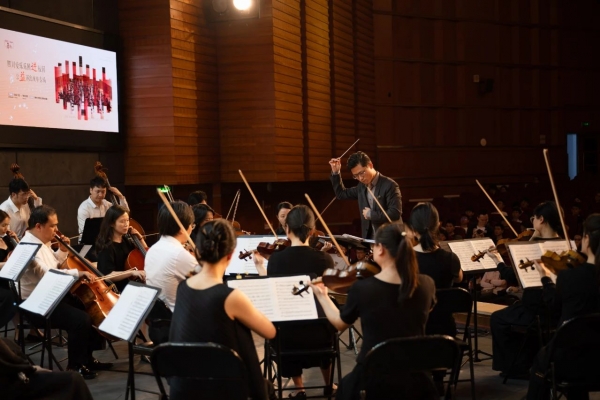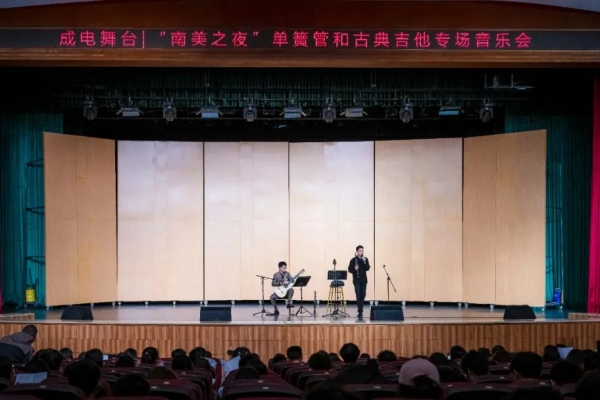即可将网页分享至朋友圈
人力资源部教师发展中心举办“学者论坛”系列学术活动,定期邀请与我校教师研究领域相关的知名学者,以专题报告的形式与师生分享和研讨最新研究动态和成果,旨在为教师提供学术探讨和交流的平台,开拓教师学术视野。现将第39期论坛安排如下,欢迎广大师生参加。
一、主题
1. Pattern Recognition by the Brain: Neural Circuit Mechanisms
2. Soft Biometrics for Human Identification
二、主讲人
中国科学院神经科学研究所 蒲慕明 院士
University of Southampton Mark S. Nixon IET/FIAPR Fellow
三、时间
2016年11月5日(周六) 9:40-12:00
四、地点
清水河校区图书馆求实厅(600人报告厅)
五、主持人
自动化工程学院/机器人研究中心 程洪 教授
六、内容简介
The brain acquires the ability of pattern recognition through learning. Understanding neural circuit mechanisms underlying learning and memory is thus essential for understanding how the brain recognizes patterns. Much progress has been made in this area of neuroscience during the past decades. In this lecture, I will summarize three distinct features of neural circuits that provide the basis of learning and memory of neural information. First, the architecture of the neural circuits is continuously modified by experience. This process of experience-induced sculpting (pruning) of connections is most prominent early in development and decreases gradually to a much more limited extent in the adult brain. Second, the efficacy of synaptic transmission could be modified by neural activities associated with experience, in a manner that depends on the pattern (frequency and timing) of spikes in the pre- and postsynaptic neurons. This activity-induced circuit alteration in the form of long-term potentiation (LTP) and long-term depression (LTD) of existing synaptic connections is the predominate mechanism underlying learning and memory of the adult brain. Third, learning and memory of information containing multiple modalities, e.g., visual, auditory, and tactile signals, involves processing of each type of signals by different circuits for different modalities, as well as binding of processed multimodal signals through mechanisms that remain to be elucidated. Two potential mechanisms for binding of multimodal signals will be discussed: binding of signals through converging connections to circuits specialized for integration of multimodal signals, and binding of signals through correlated firing of neuronal assemblies that are established in circuits for processing signals of different modalities. Incorporation of these features into artificial neural networks may help to achieve more efficient pattern recognition, especially for recognition of time-varying multimodal signals.
Soft Biometrics are the estimation or use of personal characteristics describable by humans that can be used to aid or effect person recognition. Soft biometrics are also attributes that are typically gleaned from primary biometric data which are classifiable in pre-defined human understandable categories and can be extracted in an automated manner. These attributes can contribute to recognition or can be estimated separately and this helps to improve or refine biometric systems operation. This leads to soft biometrics which can be used to reinforce conventional biometrics and which can be estimated separately, say to increase biometrics deployment capability. Alternatively, fine grained attributes can be deployed as measures used for identification. Humans can describe the body, the clothing and the face for recognition and, equally, these descriptions can be estimated by computer vision. The new approach is akin with automated eyewitness identification, using information derived by human and automated processes. We therefore have a new approach to identifying humans by using attributes that can be described by people or by automated vision. We are then well on the way to provide a new way for automated identification from surveillance video which is a capability much needed in modern society.
七、主讲人简介
Mu-ming Poo is currently the Director of Institute of Neuroscience, Chinese Academy of Sciences, Director of CAS Center for Excellence in Brain Science and Intelligence Technology, and Paul Licht Distinguished Professor Emeritus at University of California at Berkeley. Poo received his B.S. degree in physics from Tsinghua University (Taiwan) in 1970 and his Ph. D in biophysics from Johns Hopkins University in 1974. Since 1976, he was on the faculty of UC Irvine, Yale University, Columbia University, UCSD, and UC Berkeley, where he had served as the Head of Division of Neurobiology of Department of Molecular and Cell Biology and Paul Licht Distinguished Professor in Biology. Poo had received Ameritec Prize (2001), P.R. China International Science & Technology Cooperation Award (2005), Qiushi Distinguished Scientist Award (2011), Gueber Prize in Neuroscience (2016), and Docteur Honoris Causa from Ecole Normale Supérieure (Paris) and Hong Kong University of Science and Technology. He is a member of Academia Sinica (Taiwan) and National Academy of Sciences (USA), and a foreign member of Chinese Academy of Sciences, and founding member of Hong Kong Academy of Science. His research interests include nerve growth, synaptic plasticity, and neural circuit functions.
Mark Nixon is the Professor in Computer Vision at the University of Southampton UK. His research interests are in image processing and computer vision. His team develops new techniques for static and moving shape extraction which have found application in automatic face and automatic gait recognition and in medical image analysis. His team were early workers in face recognition, later came to pioneer gait recognition and more recently joined the pioneers of ear and soft biometrics. His vision textbook, with Alberto Aguado, Feature Extraction and Image Processing (Academic Press) reached 3rd Edition in 2012 and has become a standard text in computer vision. With Tieniu Tan and Rama Chellappa, their book Human ID based on Gait is part of the Springer Series on Biometrics and was published in 2005. He has chaired/ program chaired many conferences and given many invited talks. Mark is a member of IAPR TC4 Biometrics and of the IEEE Biometrics Council. He is a Fellow IET and FIAPR and the Distinguished Fellow of the BMVA 2015.
八、主办单位:人力资源部教师发展中心
承办单位:电子科技大学机器人研究中心
欢迎广大老师和同学参加!
人力资源部教师发展中心
2016年11月2日
编辑:李思扬 / 审核:林坤 / 发布:林坤


